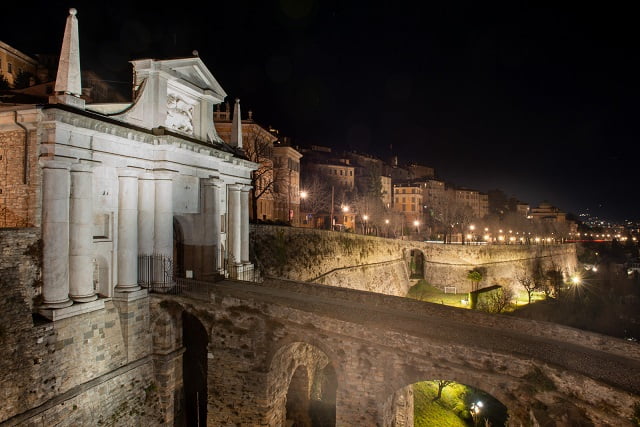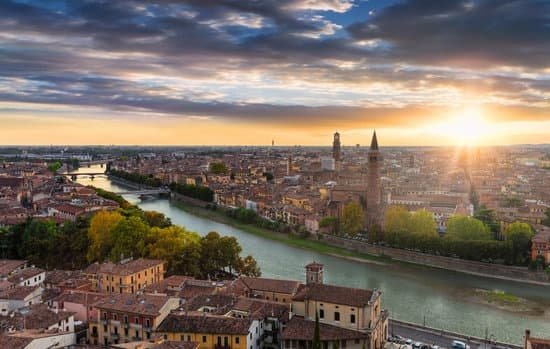
It is no exaggeration to state that Italian contributions to world history have been tremendous. From being the birthplace of the Renaissance Period, which transformed European arts and culture in the 15th and 16th centuries, to the major advances in engineering and technology that we see throughout our contemporary lives; Italy’s imprint on society is unmistakable. Let us delve further into some of their most substantial contributions.
The Italian Renaissance period spanned a crucial period of time that undoubtedly changed the trajectory of Western civilization – with a large portion of its cultural achievements created during this era. By focusing on reviving Greco-Roman civilizational values from antiquity, such as humanism, rhetoric and artistry – Italy brought forward an era of profound change and innovation in various fields such as visual arts, literature, philosophy, science and music.
This so-called “rebirth” gave birth to some prominent figures such as Michelangelo, Galileo Galilei or Leonardo da Vinci; who were instrumental in pushing forward new ideas and paradigms while defining what is now known for excellence in artistry worldwide.
Furthermore, Italian contributions have not only impacted the humanities field but have also shaped how technology can help progress many aspects of our lives. Guglielmo Marconi invented wireless telegraphs (radio) enabling communication over farther distances than before; while Enrico Fermi made important breakthroughs regarding nuclear energy release leading to a better understanding about nuclear power within an atomic nucleus.
Similarly, Ettore Bugatti designed successful motor cars and Enzo Ferrari established one of most recognizable luxury car companies around the globe – both concerning individuals who left an incredible mark on engineering advancement by giving life to revolutionary designs at the time they were unveiled.
To conclude it is self-evident that Italian contributions have played an important role throughout human history due to their astounding achievements across several disciplines. Although there are far more examples than those raised here – this overview should serve as a reminder of how culture reformation or technological breakthrough can truly shape our future for generations yet to come.
Impacts of Ancient Rome
The contributions of the Ancient Romans have had lasting effects on the modern world. The importance of Ancient Rome cannot be overstated; it laid the groundwork for politics, law, warfare and even architecture to name a few areas that were subsequently shaped by their efforts over two thousand years ago. Throughout this essay, we will explore some of these key areas in more detail.
Politics & Law
The Romans are credited with creating the basis for modern western politics and law. Their constitution was encompassed in twelve tablets – each tablet representing an area of justice such as crime, public works and taxation etc., which formed the origin of our modern legal system. The Roman senate was established not only as a political power but also to encourage debate amongst citizens which lead to innovations within many spectrums of society – including science, literature and architecture.
Architecture & Engineering
The Romans were known for their engineering ingenuity; they constructed structures like aqueducts that transported water from one place to another using gravity without any pumps or engines. They built extensive highways connecting all major cities allowing travel through much of Europe with relative ease; and other monuments and buildings throughout Italy still stand to this day – such as the Colosseum in Rome.
Furthermore, they used techniques such as barrel vaulting and arch based construction when designing buildings – which can be found throughout Europe today – highlighting how vital Roman Architecture has been to many cultures around the world.
Crucial War Strategies
The Ancient Romans developed a military strategy named ‘Octavian Doctrine’ – comprised of discipline, advanced technology weaponry (including catapult and siege weapons) formation tactics (such as phalanx formations) strategy (including flank attacks)and fortification techniques (building temporary walls). All combined allowed for a more efficient way to win a battle that ultimately spread through Western European countries – transforming their warfare system forevermore.
Italian Renaissance
The most notable Italian contribution to world history is the grandiose cultural and intellectual movement known as the Renaissance. The period, which spanned from the late 1400s to early 1600s, was known for its unprecedented focus on the advancement of arts, science, philosophy, and classical thought.
In many ways, it can be argued that this period was a golden age – a time when Italy blazed across Europe with groundbreaking discoveries and advancements in literature, visual art galleries, drama and theatre productions; medical breakthroughs in anatomy; incredible feats in architecture such as Saint Peter’s Basilica and Michelangelo’s dome; and major advances in philosophy about humanistic thought.
During this period of increased cultural activity and enhancement of classical knowledge, Italy developed into the center of European civilization.
A great many influential figures emerged during this time including Leonardo da Vinci and Galileo Galilei who made significant strides in advancing sciences like astronomy.
This legacy has both culturally enriched the world and imprinted itself onto subsequent eras throughout all disciplines. It birthed modern concepts in academia (especially humanism), art (such as linear perspective) and engineering – all of which exist today primarily unchanged.
Even areas outside the fields of academics experienced influences from these thinkers such as political documents like Machiavelli’s “The Prince” which gave insight into novel approaches to lead a country which still exists to modern day nations like France or Britain today.
In addition to inspiration from outstanding creative minds during this era also primarily attributed to Italy was democratization movements such as those exhibited by Florence’s Republic government where people had significantly more influence over their governance system than ever before seen in other major empires for example Byzantium or Rome during its antiquity era.
This demonstrates how not only did Italy genuinely expand upon possibilities within traditional studies but ultimately opened pathways for innovative advances even in large scale societies at large encouraging citizens take further part in societal structure control instead of becoming spectators of their own destinies.
A Closer Look at the Innovators Behind the Renaissance
The Renaissance is remembered as a beautiful, creative time in world history. It flourished in many parts of Europe, especially in the Italian city states. The unusual blend of political fragmentation, geographical position, international trade connections and city-state competition produced an environment for groundbreaking ideas that changed the way we view culture more drastically than even wars and conquest.
Much of this change was because of the brilliant minds of Italy during the 15th century. This period served as a breakthrough moment that inspired and revolutionized large aspects of arts, sculpture, music, science and architecture. Here’s what changed:
- Leonardo da Vinci whose works show off his immense talent for sculpture, portrait painting and scientific invention.
- Michelangelo Buonarroti whose works include “David” now housed at Galleria dell’Accademia in Florence; and two powerful papal frescoes still inside the Sistine Chapel ceiling.
- Raphael Sanzio who created meaningful religious murals for churches throughout Italy.
Many of these artists were also heavily influenced by ancient Roman ruins they uncovered and began incorporating into their buildings to give a sense of timelessness. This new style became the posterchild for all Italian Renaissance architecture with its nod towards classic antiquity complimenting fresher designs driven forward by innovators.
Discussing next amazing revolutionary thinker involved in bringing forth the Italian Renaissance is astronomer Galileo Galilei who created multiple telescopes to study stars that made it possible to break away from Aristotelian beliefs held since ancient times. He debunked much mythology related to planets and developed mathematics around astronomy which later allowed astronomers like Johannes Kepler to plot planetary orbits accurately.
A truly iconic figure from this era was Christopher Columbus who sailed across the ocean between Europe and America above churning waves and under glimmering stars. His daring journey – although historically mired with controversy – united Europe on both sides of the Atlantic ocean opening up a new chapter in world history.
Exploring the Influence of Italian Art, Language and Literature
Italy has made major contributions to world history in various areas. One of these is art, which has been a driving force for Italian culture since the days of Roman and Greek antiquity.
From the paintings of Michelangelo, Leonardo Da Vinci, and Raphael to the sculptures of Donatello and Bernini, Italy has provided a rich work of art for generations to admire. In fact, some historians consider Italian Renaissance art to be one of the most influential movements in world history.
The language spoken by Italians also bears mention when discussing their global impact. Italian was once the lingua franca among educated people throughout many parts of Europe due to its derivatives from Latin. In particular, it’s still used in much of classical literature as well as contemporary works, making it an important factor in communication between different cultures around the world.
Finally, Italian literature has had a lasting effect on Western society due to its mixture of both cultural references and philosophical musings. Great authors such as Dante Alighieri or Francesco Petrarca are noted for their captivating narratives which often bring readers into metaphysical experiences beyond just reading words on a page. Similarly literary works like La Divina Commedia or Il Canzoniere have grown legendary over time and remain classics within world literature today.
Some Examples of Italian Contributions
- Michelangelo’s Painting ‘The Creation Of Adam’
- Leonardo da Vinci’s Mona Lisa and The Last Supper
- Renaissance Sculptures by Donatello
- Francesco Petrarca’s Work Il Canzoniere
- Dante Alighieri’s Poem Divine Comedy (La Divina Commedia)
Investigating Italian Contributions to Mathematics and Science
Italy has contributed significantly to the development of science and mathematics over the course of history. From Galileo Galilei, known as the Father of Modern Science, to Leonardo da Vinci, referred to as the Universal Genius, historically Italians have played a major part in advances in these fields.
To start with mathematics, it could be argued that Italy had been responsible for many breakthroughs including founding institutions dedicated to their studies. The likes of Fibonacci demonstrated through their work how mathematical ideas were solidified and spread across Europe in the thirteenth century; however this was a benign interruption when compared to the contributions made throughout subsequent centuries.
Luca Pacioli is well known for his pioneering book “Everything Divisible by Numbers” while Bonanno Pisano arguably created the source code for modern calculus more than seven hundred years ago.
The scientific innovations continued too, with many great Italian figures such as Galileo Galilei proving the legitimacy of Copernicus’ theories that suggested that the earth revolved around the sun rather than vice versa – although at this time there was still substantial opposition from conservative powers. These scientific advancements handed onto other incredible discoveries for Italy and several different inventions alone are credited to scientists like Guglielmo Marconi (the radio) and Alessandro Volta (the electric battery).
It can thus be seen that great scientific achievements have become hallmarks of Italian culture over millennia.
The lasting influence left by famous Italians can still be witnessed today in everything from engineering to medical care and beyond. Listing all these accomplishments would require far greater space than allotted here but their intrinsic contributions include:
- Elaborate designs utilizing geometry such as Brunelleschi’s dome on Florence Cathedral.
- The devices used by astronomers such as Galileo’s telescope.
- Innovative methods within physics such as Bernoulli’s Formula.
- The invention and use of electrical currents through voltaic piles built by Volta.
- Advanced forms of robotics researched within Leonardo da Vinci’s notebooks.
Exploring the Legacies of Italian Explorers and Adventurers
Italy, a country rich in history and culture, is known for many accomplishments over the centuries. Several Italian explorers are well known for their significant exploration ventures. From Christopher Columbus’ epic journey across the Atlantic to Marco Polo’s travel along the Silk Road, Italy had a lasting impact on world history.
The Florentine explorer Amerigo Vespucci was inspired by Christopher Columbus’ voyages and conducting several explorations of his own. He mapped much of South America to European cartographers as he traveled along its coastline between 1499-1502. Subsequently, the name of this continent became “America” after him in 1507.
In 1271-1295, Marco Polo from Venice set off for China on a heritage mission to meet renowned leader Kublai Khan with his father and uncle Niccolo and Maffeo (known later as Polo Brothers). He explored ancient Chinese Empire with it’s detailed description of its people goods, geography etc that opened western world for future trade and travelers towards East Asia.
His published memoir “The Travels of Marco Polo was so popular that even Christopher Columbus consulted it in preparation for his ‘voyage of discovery’.
Another major contribution by Italy during early 19th century was made by scientists Agostino Bassi who pioneered work in entymology studied insects that spread diseases like malaria. Through his research he determined cause and effect relationship better known as ‘Pathosystematics or Dialogue between Pathogen and Host’ leading to Vaccinology evolution which brought an end to infectious diseases like smallpox often determining life or death of epidemic victims prior invention of vaccines/immunity treatments(1).
Italy was also at creative forefront through historical period spawning some great inventors; Alessandro Volta invented first electrical battery in 1800 while Guglielmo Marconi developed wireless telegraphy/radio transmission method in 1895 that revolutionized communications helping global transportation safety & security all around(2). Military engineer Leonardo da Vinci also conceived idea that spawned invention of tank thereby contributing military science over years(3).
List Format Output
- Through Amerigo Vespucci’s voyages South America was named “America”
- Marco Polo explored the ancient Chinese Empire
- Agostino Bassi pioneered work in entymology connecting pathogens with diseases.
- Alessandro Volta invented the first electrical battery.
- Guglielmo Marconi developed wireless telegraphy/radio transmission.
- Leonardo Da Vinci created sketches for tanks which led to its invention
Conclusion
Overall, Italian contributions are seen in a multitude of fields from the arts to politics. It is no wonder that Italy has become an ever-present part of World History with their influential and creative impacts throughout time. The Renaissance, led by some of the greatest minds of all time such as Galileo, Michelangelo and Da Vinci revolutionized art and science across Europe and continues to be remembered even today.
Moving forward, Italians continue to make a difference today through groundbreaking scientific advancements that positively effect our society. For example, Nobel Prize winner Rita Levi Montalicini invented both modern chemotherapy treatments for cancer as well as the stem cell research which has caused substantial changes within medical science over recent years. In addition, Guglielmo Marconi created some of the earliest wireless communication systems and technologies leading into satellite communications heard around the world today.
The influence of Italian culture has spread across the world through travel, food, linguistics and music. This combination of cultural elements is known to have made its way far beyond Europe’s borders over hundreds of years as a result from Italian explorers traveling near and far in search for new opportunities – Columbus being one prime example who famously opened up an entirely new continent to European colonization while shifting global power dynamics overnight.
From famous painters, great authors, powerful leaders, insightful scientists, revolutionary inventors and insights on culinary excellence – there can be no doubt that Italians have had a lasting impact on World History that will remain long into future generations.




